What to Expect from Your First Yoga Class
The people in my yoga classes come in all shapes and sizes and they were all entirely new to yoga at some point, just like you. They remember what’s it’s like to be new and are very welcoming. We’ve all learned that in yoga, there is no competition and no judgement. Come with a little curiosity and self compassion and you’ll find a warm, supportive learning environment.
You have nothing to fear and everything to gain.
Comfort is Key
You’ll want to be as comfortable as possible in class, so wear clothes that move with you and aren’t restrictive. Think elastic waist, stretchy pants or shorts and a shirt that gently hugs the body (not too tight) so that it stays in place as you move.
It's important that I be able to see the position of your torso and limbs to make sure you have safe alignment. Big, baggy clothes hide your body and get in the way of movement.
Barefoot is best, but if you want to wear sock, make sure they have grip-strips on the bottom so that you don’t slip on your mat.
what you’ll need
A yoga mat is really essential (unless you’re doing chair yoga, then all you need is a chair without wheels or arms). The stickiness of the mat prevents you from slipping while doing yoga. I also refer to the mat when I give instructions such as “Place your feet as wide as the mat.” or “Lying on your side, line up your hip joint and shoulder joint with the edge of the mat.” because proper alignment is key to safety.
Everything else is optional. But here are few items that you might find useful.
Yoga blocks can be used under your hands to make many poses more accessible. You can find them just about anywhere: Meijer, Target, TJ Max, Amazon, etc.
A blanket at the end of class we lie in stillness on the floor which can get a little chilly, so a blanket is always a good idea. You can also use it to cushion your knees on all fours or under your bottom in seated positions.
What you Won’t Need
A full stomach. Try not to eat anything an hour or two before class. If you do need a snack in that time frame, let it be something light, not too filling.
Meeting Online
If you’ve never used Zoom before, please contact me before the class so I can help you with the basics.
Position your device’s camera so the full mat is in view and most of your body when you stand up.
It’s okay to leave your mic on if you think you might have questions, but please mute yourself if there is background noise where you are.
Find a quiet, warm place for class. If you live with other people, make sure they know you don’t want to be disturbed.
Leave your cell phone in another room or in “Do Not Disturb” mode, or at the very least put it on vibrate.
General Guidelines
Breathe smoothly and continuously as you move; never hold your breath. As you relax your breath, your body relaxes.
Work gently, respecting your body’s abilities and limits. If it hurts don’t do it. Listen to your body.
There’s a difference between effort and strain. In yoga, we often talk about “effortless effort” but the main point, is don’t strain. If you can’t breathe comfortably, you’re straining.
You can take a break at any time. You may be in a group class, but it's your practice. You are encouraged to take child's pose (one of the first poses you’ll learn) for a couple minutes to catch your breath, then rejoin the class when you're ready.
Before class starts
In those first moments, it can feel like everyone is looking at you and you’re not sure what to do. Take the time to relax.
1. Get comfortable sitting or lying down.
2. Start to notice your breath.
3. Bring your attention inside; notice what you're feeling.
Generally, the time before class is a chance to detach from your day and get ready to practice.
the End of class
At the end of class, we lie in stillness in a pose called “savasana” or corpse pose. Some beginners feel this is a waste of time. But “to skip Savasana would be like a chef chopping up all the ingredients for a dish, then throwing them in the bin. You may have gotten better at the preparation but you've missed out on the nourishment.” - Dan of Yogi Goals
After savasana, we sit with our hands in front of our hearts and say “Namaste.” The purpose of Namaste is to recognize your connection to your internal Light or True Self and recognize that same Light in the teacher and the other students.
There's no need to memorize everything listed here to be ready for your first class. Yoga is always a learning process so all you really need is curiosity and an open mind. But at least now you have an idea of what to expect, and hopefully it has eased some of your fears and uncertainty. And, of course, if you have additional questions or concerns, please don’t hesitate to connect with me.





